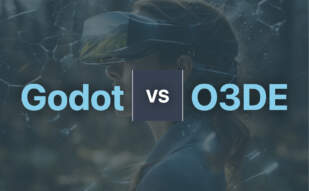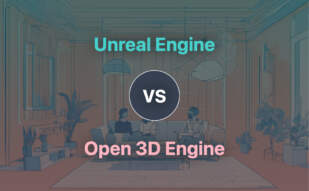O3DE is an open-source, real-time 3D engine developed by the Open 3D Foundation. Released on July 6, 2021, O3DE is written in C++, Lua, and Python, with a middleware of Qt. It is used to create high-performance, interactive experiences, simulating physics, animating, and producing cinematics.
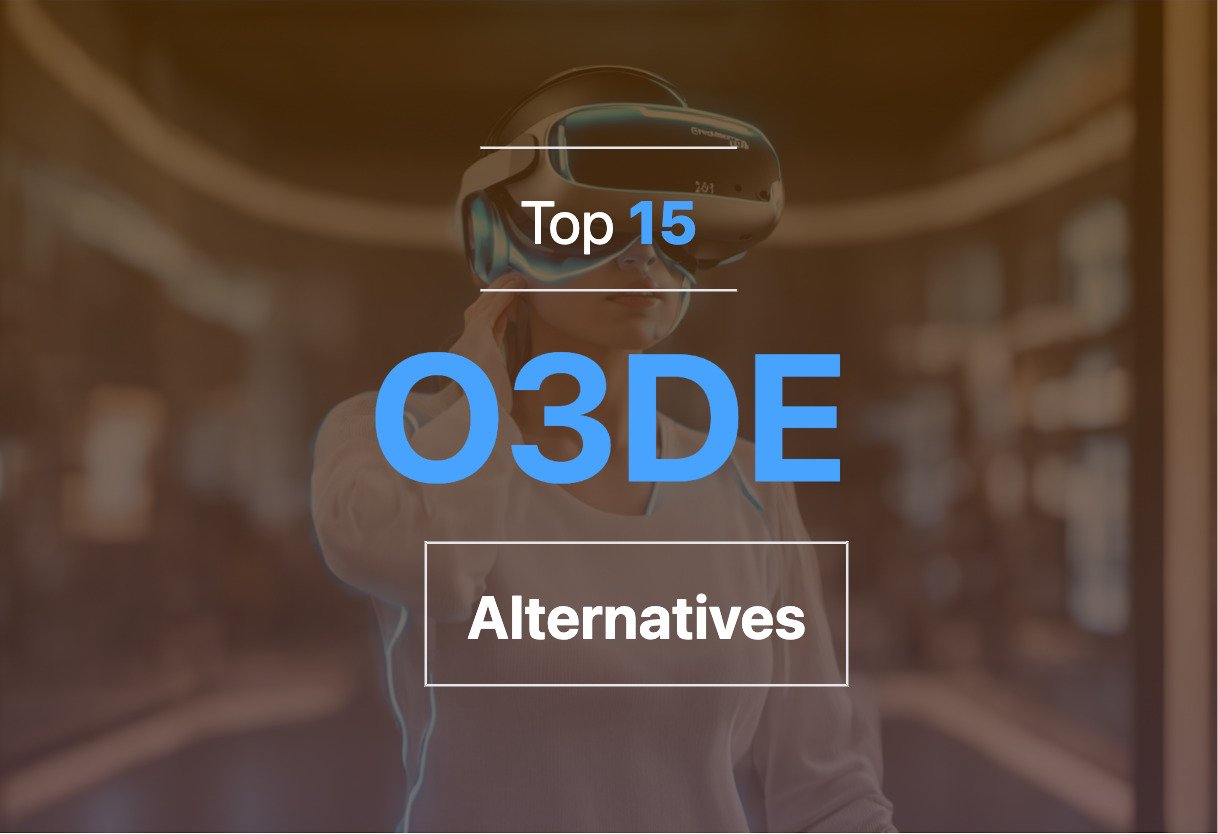
To explore alternatives to O3DE, one can consider Unity, Unreal Engine, Godot, Roblox, GameMaker, Stride, Construct 3, RPG Maker, jMonkeyEngine, LibGDX, Heaps, Panda3D, Solar2D, Blender, and GameSalad.
Unity

Launched in 2005, Unity has emerged as a potent development engine, enabling the creation of immersive 2D and 3D games. The platform flawlessly integrates with various operating systems, supporting developers in crafting a wide array of applications, from augmented reality experiences to elaborate 3D simulations.
Unity Top Features
- Enables the launch of cross-platform games, effectively supporting Android and iOS platforms.
- Offers a comprehensive set of tools, state-of-the-art rendering technology, and robust features to support high-quality game creation.
- Boasts an integrated asset store filled with pre-designed textures and features to stimulate creative game designs.
- Provides a spectrum of coding languages such as BOO script, JavaScript and C#, broadening its appeal to different developers.
- Features an active developer community, promoting assistance and frictionless problem-solving.
| Key Feature | Benefit |
|---|---|
| Adaptable with Various Operating Systems | Flexibility to develop a range of applications from AR to 3D simulations. |
| Rich Asset Store | Pre-designed textures and features for creative game designs. |
| Diverse Coding Languages | Accommodates different developers and their preferred coding language. |
Unity Limitations
- New pricing model perceived as harmful to solo, indie, mobile developers.
- Fear of potential abuse of per-install fees, including repeated downloads by a single user.
- Unannounced pricing changes leading to mistrust among users.
- Concerns that new fees could hamper digital preservation efforts.
Unity Pricing
The Unity pricing structure requires developers to pay a fee each time a Unity-created game is installed. However, the company stresses that developers will not be charged an install fee until their game accrues $200,000 in revenue and surpasses 200,000 installations. This pricing model is set to launch on January 1st, 2024.
Unity Use Cases
Use case 1: Cross-platform Game Development
Unity serves as a reliable engine for developers aspiring to create games that run seamlessly across Android and iOS platforms. The adaptability with diverse operating systems empowers developers to design and launch games on multiple platforms simultaneously.
Use case 2: Augmented Reality Apps
Developers can utilize Unity’s flexible and feature-rich platform to create cutting-edge AR experiences. The extensive range of pre-designed textures and features available on Unity’s asset store facilitates the production of sophisticated AR applications.
Use case 3: 3D Simulations
In the realm of 3D simulation, Unity’s advanced rendering technology and Bethesda’s versatile coding options allow developers to craft high-quality, immersive simulations, putting a premium on user experience.
Unreal Engine
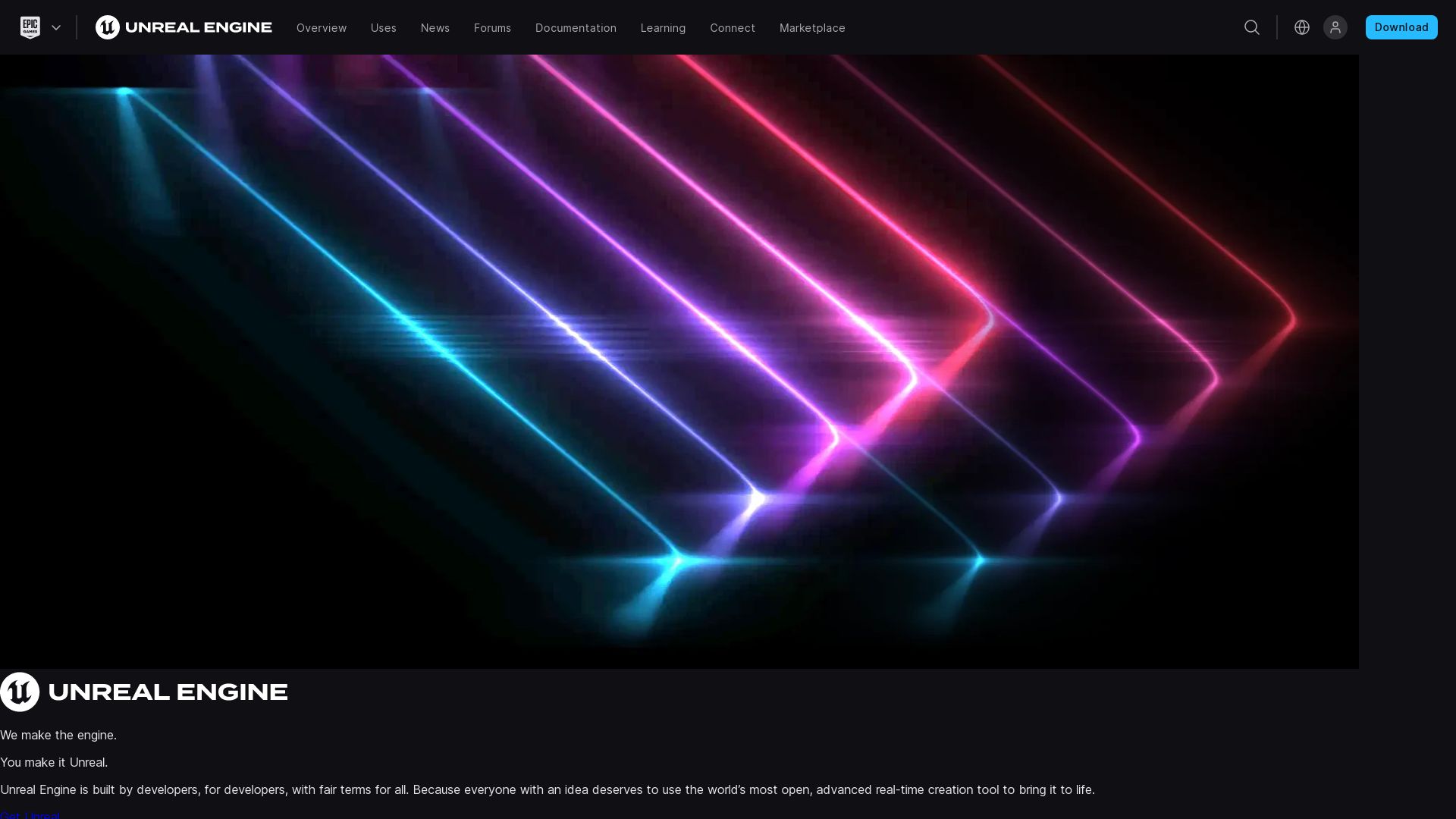
Nestled in the heart of game development, Unreal Engine by Epic Games stands as a testament to the power of 3D computer graphics. This game engine carries its legacy from its grand debut in 1998 with the game “Unreal” but has since transcended the realms of first-person shooters, extending its tendrils into various game genres and industries including film and television.
Unreal Engine Top Features
- Extensive Platform Support: Written in C++, Unreal Engine champions versatility, accommodating a broad spectrum of platforms ranging from desktop, mobile, console, to virtual reality platforms.
- Quixel Integration: With the judicious acquisition of companies like Quixel, Unreal Engine has fortified its features, proffering high quality and detailed graphics.
- Real-time Editing: With UnrealEd, Unreal Engine’s level editor, it supports real-time constructive solid geometry operations, allowing developers to mold their creativeness right there and then.
- Development Kit: The Unreal Development Kit, a free version of UE3’s SDK, brings game development closer to a generalized audience by enabling the creation of iOS games and apps.
- Marketplace: Unreal Engine nurtures a thriving community where users can sell their creations or purchase the work of other developers. To sweeten the deal, it provides a generous 88% share of the revenue generated to the content creators for the marketplace.
| Features | Descriptions |
|---|---|
| Modding capacity | Unreal Engine 3 was relatively open for modders to experiment with, encouraging custom creativity. |
| Basic project templates | For beginners, Unreal Engine supplies fundamental project templates that serve as starting points for both first-person and third-person experiences. |
| Unreal Engine 5 | Launched in April 2022, the latest release caters to the next generation of game development. |
Unreal Engine Limitations
- Despite its alluring array of features, newcomers might find Unreal Engine’s interface to be overwhelming in complexity.
- The potential steep learning curve primarily arises from its underlying programming language, C++, which might prove challenging to grasp for beginners.
Unreal Engine Pricing
While the engine itself is free to use, be prepared to give a share of your success back. Epic charges a 5% royalty on revenues over USD 1 million for commercial usage, putting a small dent in your pocket in exchange for its high-end capabilities. However, if you utilize the Epic Games Store to publish your game, this royalty fee is graciously waived.
Unreal Engine Use Cases
Use case 1
For those aspiring to deliver visually stunning and highly interactive VR experiences, Unreal Engine, with its potent rendering capabilities and VR platform support, is the perfect ally.
Use case 2
Game modding enthusiasts find a playground in Unreal Engine. Its openness to modding and an inclusive community not only provides endless unique creations but also serves as an excellent learning resource.
Use case 3
For educational institutions, Unreal Engine offers an enriching, hands-on approach to teaching technology. The engine is free for schools and universities, making it an invaluable tool for future game developers and graphic artists.
Heaps

Allow us to introduce you to Heaps – a stalwart engine in the gaming development realm. Hailing from the ingenious mind of Haxe’s creator, Nicolas Cannasse, Heaps powers an range of incredible games like Dead Cells and Northgard.
Heaps Top Features
- Maturity: Offering a robust and refined engine for creating high-performance games.
- Flexibility: It supports both 2D and 3D capabilities, fitting any creative vision.
- Diversity: Used for multiple game genres – from Arcade to Strategy, and more.
- Community association: A renowned part of the indie game development community.
| Additional Features | Benefits |
|---|---|
| Optimization | Known for performance optimization, ensuring seamless gameplay experiences. |
| Stability | Bolsters game stability, a fundamental aspect for any successful game. |
| Haxe programming language | Boasts the potential to replace Flash with its platform-independent benefits. |
Heaps Limitations
- Despite its many pros, Heaps is more of a library than a full-featured engine, unlike Godot and Unity.
- For budding developers, transitioning to a Haxe-based development might prove initially challenging.
Heaps Use Cases
Use case 1
Heaps serves as the go-to engine for game developers seeking optimization and stability. Popular games like Dead Cells and Northgard showcase its prowess.
Use case 2
Heaps is a perfect fit for independent developers, thanks to its association with the indie game development community. Its flexibility and diversity offer immense creative liberties.
Use case 3
For developers transitioning from Flash to a platform-independent solution, Heaps, with its Haxe programming language presents an enticing option.
Panda3D

Developed first by Disney Interactive, Panda3D is a mature, feature-heavy game engine that thrives in the world of 3D rendering and game development using Python and C++. An open source platform with full support of these languages, Panda3D operates across platforms from Windows to FreeBSD.
Panda3D Top Features
- Cross-platform compatibility: Seamless operation on Microsoft Windows, Linux, macOS, and FreeBSD.
- Complete Python and C++ support: Ideal for Python and C++ developers, with automated engine structure management by Python’s garbage collector.
- Comprehensive 3D capabilities: Panda3D is a scene graph engine providing profound control of 3D models placement in Cartesian space and supporting custom shaders and modern lighting techniques.
- Integrated audio and additional features: Comes with FMOD, OpenAL or Miles Sound System for 3D audio, also has physics and AI systems, finite state machines, networking capabilities, and input device support.
| Tool | Explanation |
|---|---|
| Custom Shaders | Adding lifelike textures and effects to the games. |
| Physics System | Instrumental in creating virtually real and interactive in-game environments. |
| Networking | Essential for creating multiplayer and online connected experiences. |
Panda3D Limitations
- Not beginner-friendly: Panda3D is geared towards professionals, therefore requiring a basic understanding of Python and APIs.
- Limited mobile compatibility: Although it provides an option to cross-compile for Android, it doesn’t explicitly support other mobile platforms.
Panda3D Pricing
Panda3D is available for free being an open source project. They welcome financial support through their OpenCollective campaign.
Panda3D Use Cases
Use case 1. Commercial Game Development
Developers use Panda3D due to its extensive range of features and libraries, as well as its strong Python and C++ support.
Use case 2. Educational Purposes
Universities and other educational establishments leverage Panda3D to educate students about the intricacies of game development.
Use case 3. Open-Source Projects
Open-source projects utilize Panda3D due to its free availability, extensive community support, and its rich feature set.
Solar2D

Emerging from the lineage of Corona SDK, Solar2D is an open-source, multiplatform game development daimyo. From mobile to desktop and TV devices, it delivers graphical prowess with zero royalties and zero data gathering.
Solar2D Top Features
- Cross-Platform: Develop for iOS, Android, Windows, MacOS, Linux and web.
- Instant Update Simulator: Real-time testing of code and asset alterations.
- Live Builds: Instant network updates propelling continuous development.
- Extensive Plugins: Wide array for in-app features, including advertising and analytics.
- Solar2D Native: Allows calls to native libraries/APIs using Lua, C++, Obj-C, and Java.
| Top Advantage | Key Feature |
| Single Code Base | Cost and time efficiency. |
| Multiple Designing Options | Creative freedom and design emphasis. |
| Community Support | Thousands of developers ready to help. |
Solar2D Disadvantages
Despite offering many advantages, Solar2D is not without possible drawbacks, going unmentioned in the provided summary. For a complete and informed decision, investigate the platform’s limitations elsewhere.
Solar2D Pricing
Solar2D is a horse free to ride. It embraces open-source ecology, marries environmental responsibility with innovation, and shuns hidden fees or royalties.
Solar2D Use Cases
Use case 1 – Mobile Game Developers
With strength in cross-platform development, Solar2D is ideal for mobile game developers. Employ single code base for streamlined development across iOS, Android, and Kindle.
Use case 2 – Desktop Application Architects
MacOS, Windows, Linux – all easily tamed with Solar2D. The integrated simulator accelerates development and previews your app functionality on devices before shipping.
Use case 3 – Ad-Focused Developers
Solar2D serves developers prioritizing in-app advertising. Its extensive plugin architecture integrates ads, fueling your monetization engines.
Blender

Developed initially by the Dutch animation studio NeoGeo, Blender is a powerful, open-source, 3D computer graphics software toolset. Launched in 1994, it has evolved into a formidable tool for creating animated films, art, digital drawings, and even applications for virtual reality.
Blender Top Features
- 3D Modelling: Allows the creation of detailed and complex 3D printed models and artwork.
- Texturing and UV Mapping: Aids in creating lifelike appearances for models through texture mapping.
- Fluid and Smoke Simulation: Simulate realistic fluids and smoke to enhance visual effects.
- Animation: Create fluid animations with match moving and rendering capability.
- Video Editing and Compositing: Integrated tools for professional-level video editing and image compositing.
| Supported OS | Linux, macOS, Windows, BSD, Haiku |
| Software Size | 193–305 MiB |
| Supported Languages | 36 |
Blender Limitations
- Blender Game Engine was depreciated in the 2.8 release, limiting its utility for game developers.
- Blender Internal was removed in the 2.80 release, making the Eevee renderer the primary choice.
Blender Pricing
Blender is a free and open-source tool, available to all individuals and entities under the GPL-2.0 license.
Blender Use Cases
Use case 1 – Animated Films
Blender’s wide range of features from modelling to animation makes it an ideal tool for creating detailed, animated films.
Use case 2 – Visual Effects
The powerful fluid, smoke, and particle simulations enable artists to create stunning and realistic visual effects in films and other multimedia content.
Use case 3 – Virtual Reality Applications
Blender’s robust toolkit allows developers to create interactive 3D applications optimized for virtual reality, bringing to life immersive environments and experiences.
GameSalad
If you’re weary of the code-first, think-later approach to game development, meet your next brainstorming sidekick: GameSalad. This cheeky little software offers drag-and-drop gaming creation, allowing you to mold interactive worlds for a medley of platforms like iPhone, iPad, Android and HTML5.
GameSalad Sizzlers
- A library bursting with complex behaviors – custom game creation made easy.
- Test your games on Apple’s devices, directly on the native turf, before pushing them into the App Store.
- GameSalad Pro: a bolder, stronger, feature-rich version, adding fresh spice with social features and tempting monetization options.
- Comprehensive tutorials that transform software complexities into child’s play. Ideal for first-timers or non-tech savvies – no coding knowledge required! It’s pure visual magic.
| Additional Highlights | Associations |
|---|---|
| Supports Android, iOS, Windows, Amazon Marketplace | Partnered with Macworld Expo for the 2010 GameSalad Challenge |
| Offers substantial features like integrated physics and expressions | Collaboration and initiatives with Connally and James B. Conant High Schools for game design education |
| Employs tables/arrays for accessing bulk data | Available at classroom, school-wide level, and for individuals with a curriculum that aligns perfectly with ISTE and K-12 CS standards |
GameSalad Hiccups
- Journey has been rocky: around half the staff was laid off between October-November 2012, and free memberships halted abruptly in 2015.
- Requires a bit of patience to navigate the graphical UI and learn the ropes of the software.
GameSalad Pricing
GameSalad introduced the “Free-to-Make” model, but flinches from offering freebies since 2015. Look for updates on their pricing.
GameSalad Use Cases
For STEAM learning
A perfect play-and-learn tool for schools to immerse students in the foundations of game creation, CS principles and logic-based thinking.
For educators
An attractive tool for teachers to foster problem-solving skills and expand students’ understanding of technology in a fun, gripping way.
For the novice game-maker
A safe haven for any passionate newbie looking to dip their toes into game creation without drowning in lines of code.
Godot: An Open-Source Powerhouse
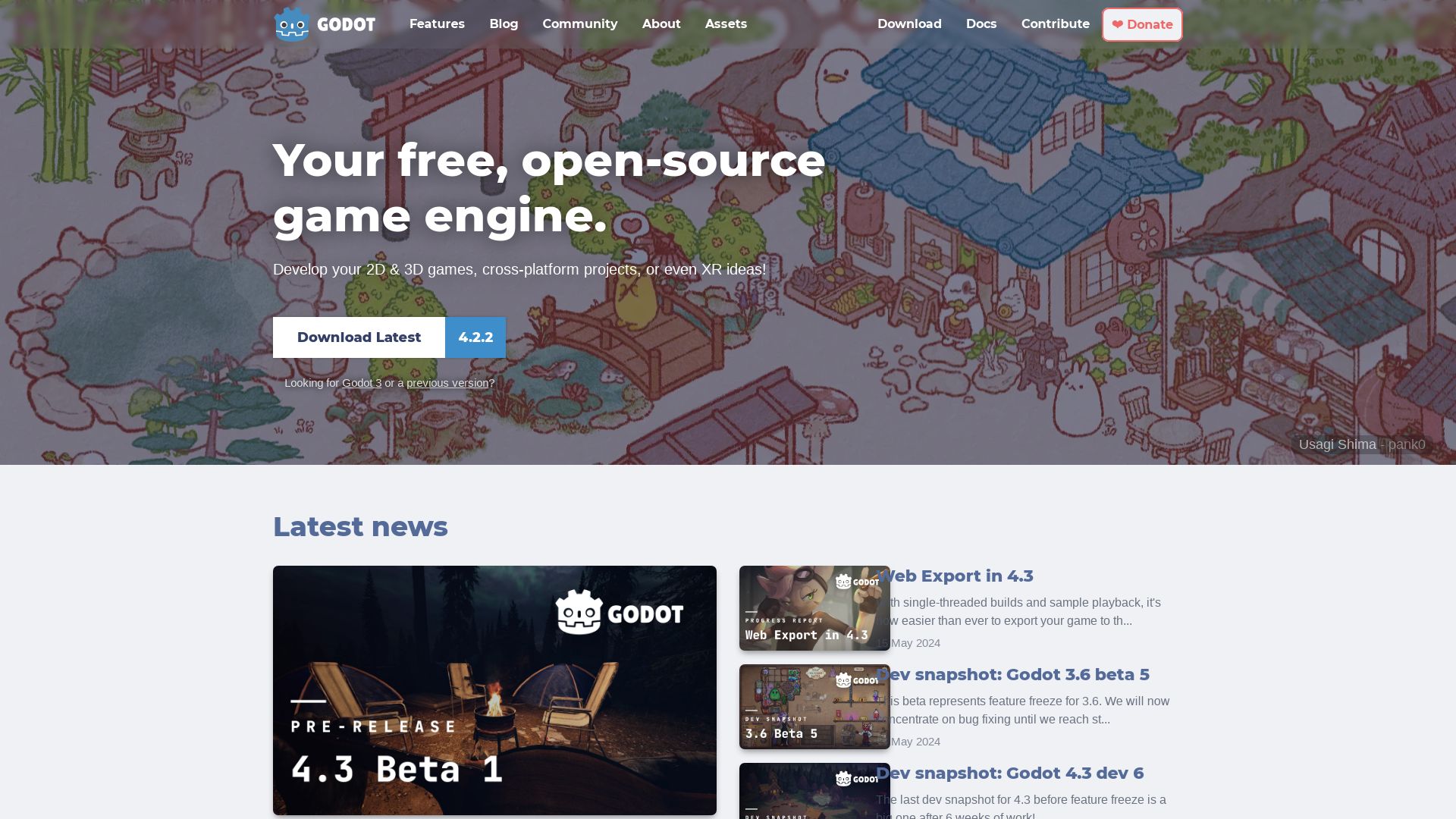
Let’s delve into Godot, the game engine that’s shaking up the industry, offering an open-source alternative in the world of game development. Known for its intuitive scene-driven design and flexible language support, Godot is paving its own path in simplicity and convenience.
Godot’s Top Features
- Intuitive scene-driven design: Create games using simple blocks and reusable scenes combined into full-featured components.
- Inclusive language support: Not only does Godot have a built-in scripting language, GDScript, it also supports C# for the .NET platform and offers community support for languages like Rust, Nim, Python.
- Device versatility: High or low-end device? No problem! Godot’s 3D engine is flexible to accommodate your needs.
- Direct Blender file import and specialized 2D workflow: An excellent choice for developers who require streamlined game logic and an organized workflow.
| Open Source | Platform Support | Collaborative Functionality |
|---|---|---|
| Godot is free under MIT license with a modifiable codebase. No hidden fees or contracts to worry about. | From Windows, macOS to Linux, Godot operates seamlessly across multiple platforms. | It includes storage solutions designed for team collaboration, making it a developer-friendly choice. |
Godot’s Limitations
- Despite its many advantageous features, Godot is not suitable for complex 3D game development.
- The primary support for .NET is only available for desktop platforms in Godot 4.
Godot Pricing
Godot is absolutely free! Yes, you read that right! Coming under the MIT license, it is open-source, allowing developers unfettered access without financial bounds.
Godot Use Cases
Use case 1: Indie Game Developers
If you’re an indie game developer, the flexibility and zero-cost model of Godot could be an absolute game-changer. With its built-in scripting language and easy import of Blender files, you can focus on crafting your vision.
Use case 2: Educational Settings
Multi-language support makes Godot the perfect fit for a classroom setting. Beginners exploring game coding can get hands-on experience without breaking the bank.
Use case 3: Studio Prototyping
Godot’s scene composition and tree structure really shine when building prototypes, making it a popular choice among studios.
Roblox

Established in 2004 by David Baszucki and Erik Cassel, Roblox is an eminent online platform for game creation and gameplay, garnering more than 100 million active users monthly. It bursts with a library of over 50 million user-generated games, synthesized using the power of the proprietary Roblox Studio engine.
Roblox Top Features
- Unrestricted Creation: Empowers developers with Roblox Studio where games are coded in Lua derivative, Luau.
- Collaborative: Promotes cooperative development and interaction through social features such as friend addition and chat functionality.
- Prolific Catalogue: Hoards an immense content library with over 50 million user-generated games.
- Rewarding: Creators financially incentivised with robust pay-out systems; projected payout exceeded $100M in 2019.
- Safe & Social: Ensures player safety through innovative security algorithms and welcomes a lively social presence on platforms like YouTube.
- Flexible Compatibility: Integrates smoothly with external software like Blender and supports multiple operating systems and platforms.
| Feature | Description |
|---|---|
| Community Bond | Developers hold a vital sense of shared support and community with fellow developers. |
| In-App Purchase Mechanism | The in-app purchase system is managed using its virtual currency, Robux. |
| Game Development Scope | Supports creation of intriguing worlds, custom characters, interactive experiences, and simulation games. |
Roblox Limitations
- Moderation Concerns: Recurrent criticism for issues related to in-game moderation.
- Microtransactions: Oversee allegations related to exploitative microtransaction practices.
- Content Misuse: Received flak for adult content misuse and alleged child-exploitative conduct.
Roblox Use Cases
Use case 1: Aspiring Developers
For fledgling developers yearning to explore the world of game creation, Roblox Studio provides an ideal platform to build, learn, and create instantaneously.
Use case 2: Social Gamers
Irresistible for social gamers, Roblox offers extensive online multiplayer games, the ability for friend addition and chat functionality, delivering an immersive social experience.
Use case 3: Small businesses & Freelancers
Roblox nurtures a conducive platform for small businesses and freelancing developers to craft engaging experiences and monetize their creativity.
GameMaker
Embark on an insightful journey as we delve into the kingdom of GameMaker, a cathedral of creativity and a testament to the ever-evolving realm of 2D game design. Honoured and acclaimed by creators like Gabriel Gonçalves (Gagonfe), Carl Pilon (Orange Pylon Games), and Gabe Weiner (lazyeye), it is a seductive platform that combines simplicity with an extensive range of tools.
GameMaker Top Features
- Brimming with a comprehensive library of tools poised to empower users from vast horizons.
- Scalable architecture, favoured among novice and experienced creators alike.
- Proven success stories such as Undertale, Hyper Light Drifter, and Chicory: A Colorful Tale, are testament to its capabilities.
- A forward-thinking platform that listens to its community, always striking a balance between new features, basic maintenance, and user feedback.
- Versatile Language Server providing Syntax Highlighting and Intellisense support.
| Major Updates | Coming in 2023 |
|---|---|
| New code editor | ✔ |
| Enhanced modding capabilities | ✔ |
| AI integration | ✔ |
GameMaker Disadvantages
- Primarily designed for 2D games, thus might not be suitable for developers intending to create 3D projects.
- Despite the simplicity, a steep learning curve may exist for the uninitiated.
GameMaker Pricing
The financial aspect of GameMaker offers tiers tailored to your needs: a generous Free version, a Creator package for desktop-based development, Indie for more expansive game release options, and Enterprise for dedicated studio releases onto major gaming consoles.
GameMaker Use Cases
Use case 1
For the artist marred by technicalities, GameMaker presents a simple yet robust tool to transform your creative vision into memorable 2D gaming experiences.
Use case 2
For the budding developer, it lays a gentle foundation to learn, explore, and eventually master the universe of game development.
Use case 3
For the agile indie studio, GameMaker proposes a cost-effective solution to develop their brainchild, ensuring their games reach the audience it deserves.
Stride
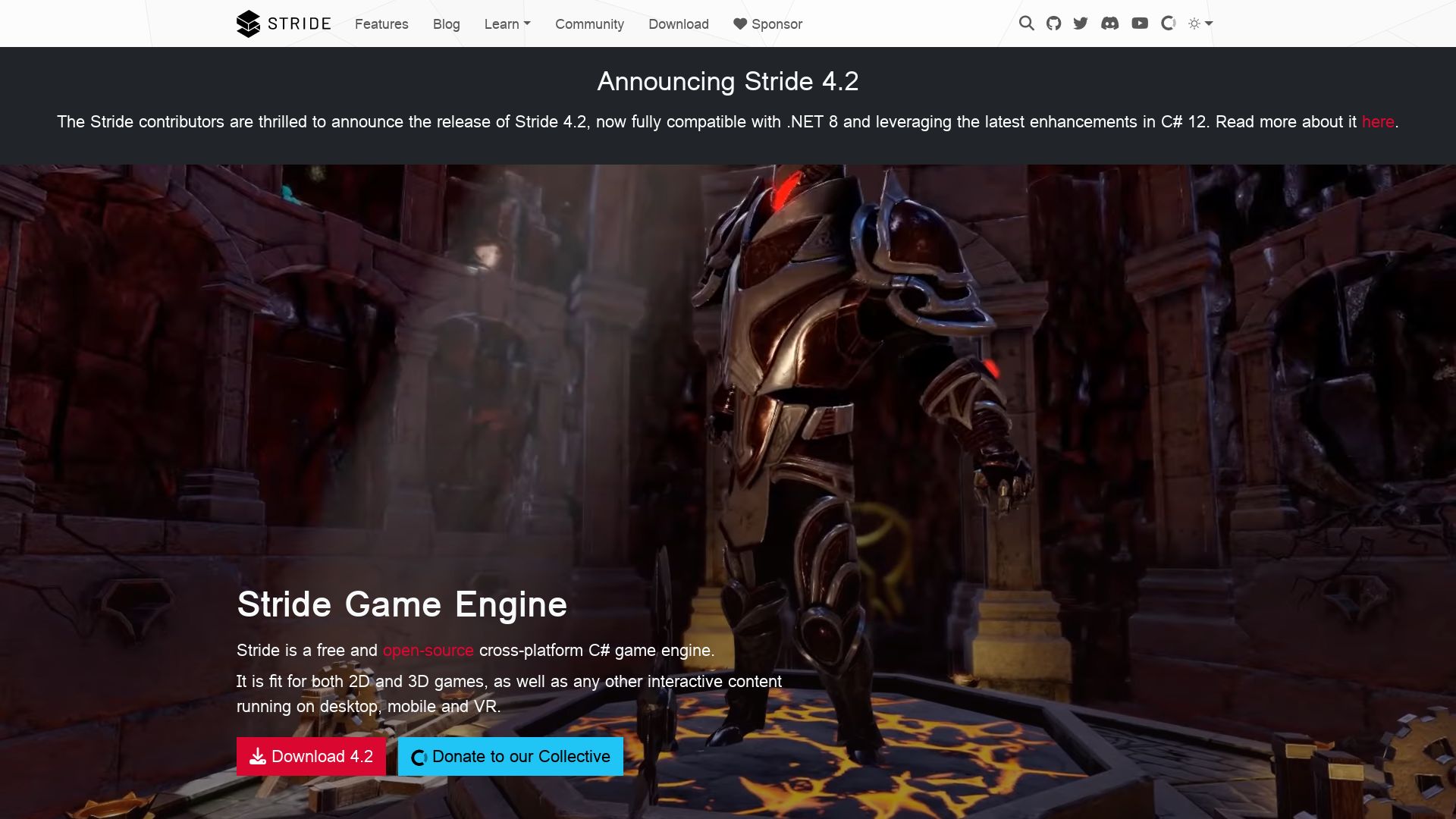
A versatile platform, Stride is a free, open-source, 2D and 3D cross-platform game engine. Developed by Silicon Studio, it enables the creation of video games for numerous platforms ranging from PC to virtual reality.
Stride Top Features
- C# suite tools: Offering developers a familiar environment for game scripting.
- Customizable shader system: Allowing in-depth visual customization to suit developer’s artistic vision.
- The Game Studio: An integrated environment for asset import, scene creation, and arrangement using an Entity component system.
- Physically-Based Rendering (PBR) layered material editor: Provides a highly realistic rendering method for lifelike graphics.
- The platform offers a streamlined user interface engine for intuitive UI creation.
| Feature | Description |
|---|---|
| Cross-Platform Runtime Support | Stride exhibits efficient compatibility with iOS, Android, Windows UWP, Linux, and PlayStation 4. |
| Additional Uses | Beyond game development, Stride is utilised as a 3D rendering engine for the visual programming environment vvvv gamma. |
Stride Limitations
- Stride saw a shift from dual-license under GNU GPLv3 and for-pay alternative to a purely MIT License scheme.
- The change resulted in Silicon Studio relinquishing support on August 2, 2018, transitioning the engine to a community-supported model.
Stride Pricing
Stride operates on an open-source model, making it free of cost. It was relicensed under the MIT License, a permissive free software license.
Stride Use Cases
Use Case 1
Stride’s cross-platform compatibility makes it an ideal choice for developers seeking to create games for various platforms, including PC, mobile devices, and virtual reality.
Use Case 2
Its photorealistic postprocess effects and customizable shader system are a boon for developers focused on creating visually captivating gaming experiences.
Use Case 3
Stride’s open-source model and community-driven approach offer a beneficial environment for indie developers looking for a cost-effective and collaborative platform for game development.
Construct 3

Sailing under the banner of Scirra Ltd, Construct 3 is an HTML5-based 2D video game engine that provides a quintessential platform for beginners and professional developers alike. This web-based application has swiftly risen to prominence in the sphere of game development, championing the realm of 2D games.
Construct 3 Top Features
- An intuitive programming system using ‘event sheets’ that allows users to create games swiftly.
- A platform compatible with any device offering offline support for uninterrupted creativity.
- A built-in pixel editor for seamless game graphic designs.
- A robust system with a strong foothold in logic-based actions, responding to conditional triggers and constrained by specific statements.
- JavaScript integration for advanced users seeking complexity and high-functioning operations.
| Feature | Description |
|---|---|
| Exporting Capabilities | Construct 3 exports games into web apps or uses an HTML wrapper for a wide range of outputs. |
| Compatibility | It offers broad compatibility accommodating Google Chrome, Firefox, Internet Explorer 9+, Safari 6+, and Opera 15+. |
| Versatility | Although Construct 3 is specifically 2D focused, the system can be extended for pseudo 3D games creation. |
Construct 3 Limitations
- Construction of large-sized games may pose challenges due to the system’s limitations.
- Though proficient in 2D game creation, Construct 3 is not a viable option for 3D game development.
- The system lacks native exporters and native offline application behavior, which can limit its creativity scope.
Construct 3 Pricing
Crave more features? Construct 3 offers a premium plan at a modest price starting at $99/year for individual use. If savoring the taste before making the investment is your style, you can avail of their free license version.
Construct 3 Use Cases
Use case 1: Educators & Schools
With its simplicity and logical approach, Construct 3 has found a home in over 400 schools across the US. Its downloadable feature and offline support make it an ideal, interactive platform for coding curriculum in regions with variable internet connectivity.
Use case 2: Indie Developers
Construct 3 is the darling of indie developers. This engine’s swiftness and ease of use, coupled with its reliable platform, make it the perfect tool for transforming game ideas into reality.
Use case 3: Professional Developers
For professional developers, Construct 3 is a reliable partner. Its JavaScript integration feature satisfies the needs for complexity and scalability, while its ‘event sheets’ simplify the game development journey.
RPG Maker
RPG Maker, a game development software catered towards creating immersive role-playing games, was developed by ASCII, Enterbrain, Agetec, Degica, and Gotcha Gotcha Games. First released in 1992, it’s gained recognition for its simplicity and wide platform compatibility. It’s used for developing sprite-based, 2D games inspired by early Final Fantasy titles, accommodating both beginners and experienced developers.
RPG Maker Top Features
- Simple to use interface – no coding knowledge required.
- Robust character creation options enriching game diversity.
- Cross-platform – compatible with Windows, Mac, Linux, PlayStation to Xbox One and Nintendo.
- Wide range of plugins, mostly free, augmenting customization.
- Over 200 DLCs expanding creativity and game elements.
| Latest Iteration | RPG Maker MZ – Released on August 27, 2020 |
| Community Support | Extensive with modifications shared among peers. |
| Developer Experience Level | Suitable for beginners and skilled developers |
RPG Maker Limitations
- Designs subject to engine’s limitations – Cannot accommodate every game concept
- Skillful developers required to prevent game from destined failure
- Some games developed using RPG Maker have sparked controversy.
RPG Maker Pricing
Pricing model for RPG Maker is diverse with the base software being affordable, and having extra elements purchasable as DLCS typically ranging from $5-$25.
RPG Maker Use Cases
Use case 1 – New Developers
RPG Maker is ideal for beginner developers due to its simple to use interface and zero requirement for coding knowledge. It also offers an affordable entry point to game development.
Use case 2 – Sprites/2D Game Developers
With its strength in sprite-based and 2D games, designers wishing to emulate early Final Fantasy style can utilize RPG Maker for an optimal experience.
Use case 3 – Story-Driven RPGs
Developers intent on crafting story-heavy RPGs can also take advantage of RPG Maker’s focus on story-driven elements, circumventing technical limitations and channeling on creative exploration.
jMonkeyEngine
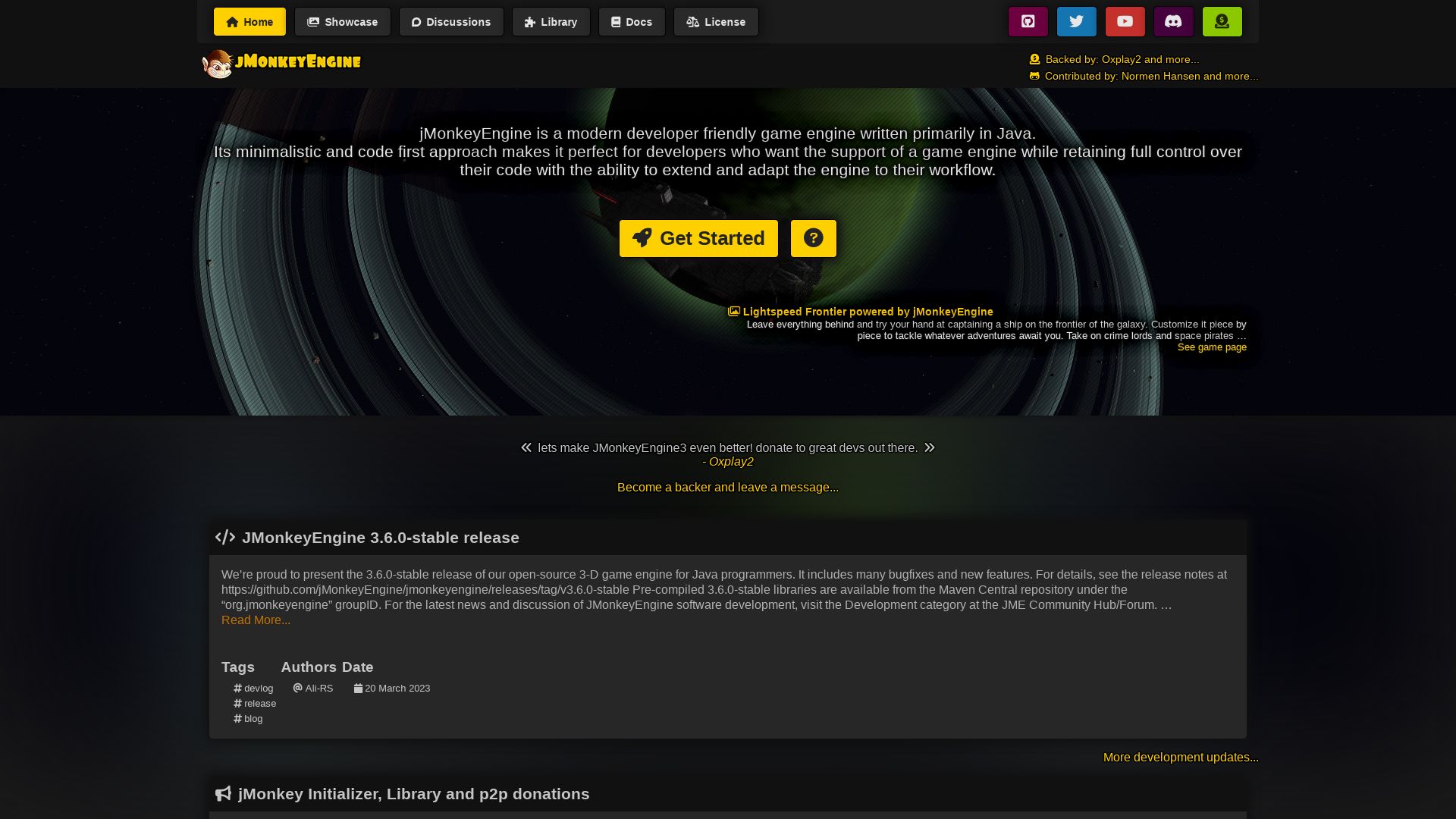
Introducing jMonkeyEngine, an advanced, open-source, Java-based 3D game engine capable of producing high-quality games for cross-platform release. With a simplistic, code-first approach, it is primarily targeted at developers who prefer hands-on control over their game development process.
jMonkeyEngine Top Features
- Incorporates an easy-to-use graphical subsystem that helps create stunning graphics, including post-process water and light scattering.
- Leverages bullet physics to create realistic movement and actions.
- Supports a built-in terrain system for the easy creation of expansive terrains.
- Supports both 2D and 3D audio with OpenAL for an immersive gaming experience.
- NetBeans Platform, Android-capable, enabling game distribution across multiple platforms.
- Comprehensive online documentation, video tutorials, and a rich developer community to assist beginners and experienced programmers alike.
| Feature | Description |
|---|---|
| Networking Options | Includes Spidermonkey, SimEthereal, Monkey Netty as easy-to-implement networking options. |
| Physics Solutions | Offers various physics solutions including jBullet, Minie. |
| Advanced Particle Capabilities | Provides advanced particle controls to create spectacular effects. |
jMonkeyEngine Limitations
- While it’s beginner-friendly, its lower-level game development tool status may require a steeper learning curve for some users compared to high-level tools.
- Despite its comprehensive attributes, some may find its minimalist nature limiting in aspects of vast multimedia content.
jMonkeyEngine Pricing
One of the finest attributes of jMonkeyEngine is its free accessibility. Being open-source, it works under a permissive BSD 3-Clause license, making it an affordable choice for all developers.
jMonkeyEngine Use Cases
Use Case 1: Game Development Education
Popular in game-education programs, jMonkeyEngine makes a great tool for helping future game developers learn the ropes, owing to its in-depth documentation and learning resources like Greenfoot, Alice, and Kojo.
Use Case 2: Serious Game Development
jMonkeyEngine has proven its worth in serious game development projects, with many commercial games created using it demonstrating its capabilities in producing high-quality, immersive gaming experiences.
Use Case 3: Cross-Platform Game Publishing
Given its cross-platform compatibility, jMonkeyEngine allows for publishing games on PC, Linux, iOS, Android, and Mac, making it an ideal choice for developers who aim at distributing their games widely.
LibGDX
LibGDX is a Java game development framework with a trusted foundation and over 10 years in the industry. It boasts a unified API for cross-platform targeting, including Windows, Linux, macOS, Android, iOS, and the web. Coupled with OpenGL ES 2.0/3.0 for rendering, it is a comprehensive solution for game development.
LibGDX Top Features
- Renders via OpenGL ES 2.0/3.0.
- Comes with a rich third-party ecosystem.
- Offers fine-grained control with a code-centric approach.
- Features audio streaming for WAV, MP3, OGG and direct PCM sample playback and recording.
- Provides extensive input handling for mouse, keyboard, touchscreen, controllers, accelerometer, gyroscope, and compass with gesture detection support.
- Integration of game services such as Google Play Games, Apple Game Center and supports in-app purchases.
| Feature | Description |
|---|---|
| Physics | Provides 2D physics via Box2D and 3D physics via Bullet physics. |
| Networking | Supports TCP sockets, HTTP requests, and WebSocket. |
| 3D APIs | Includes decal batching, simple loaders for Wavefront OBJ and MD5, lighting systems, GLTF 2.0 support, VR support. |
LibGDX Limitations
- As it is Java-based, game development is limited to platforms that support JVM.
- Being code-centric, it requires a solid understanding of coding, making it less user-friendly for beginners.
- While the community is active and supportive, issues might take longer to solve due to the resource dependency on voluntary contributors.
LibGDX Pricing
LibGDX is totally free to use and is licensed under Apache 2.0.
LibGDX Use Cases
Use case 1: Cross-Platform Game Development
With a unified API, LibGDX is perfect for developers who are keen on publishing their games on various platforms such as Windows, Linux, macOS, Android, iOS and the web.
Use case 2: Advanced Game Projects
Given its wide variety of features like 2D/3D physics, networking, multiple inputs and VR support, LibGDX is ideal for developers aiming for intricate game mechanics.
Use case 3: Coding Heavy Projects
For those comfortable around heavy coding and looking for fine-grained control, LibGDX is the best match with a feature-centric architecture.
Grant Sullivan
Content writer @ Aircada and self proclaimed board game strategist by day, AI developer by night.




